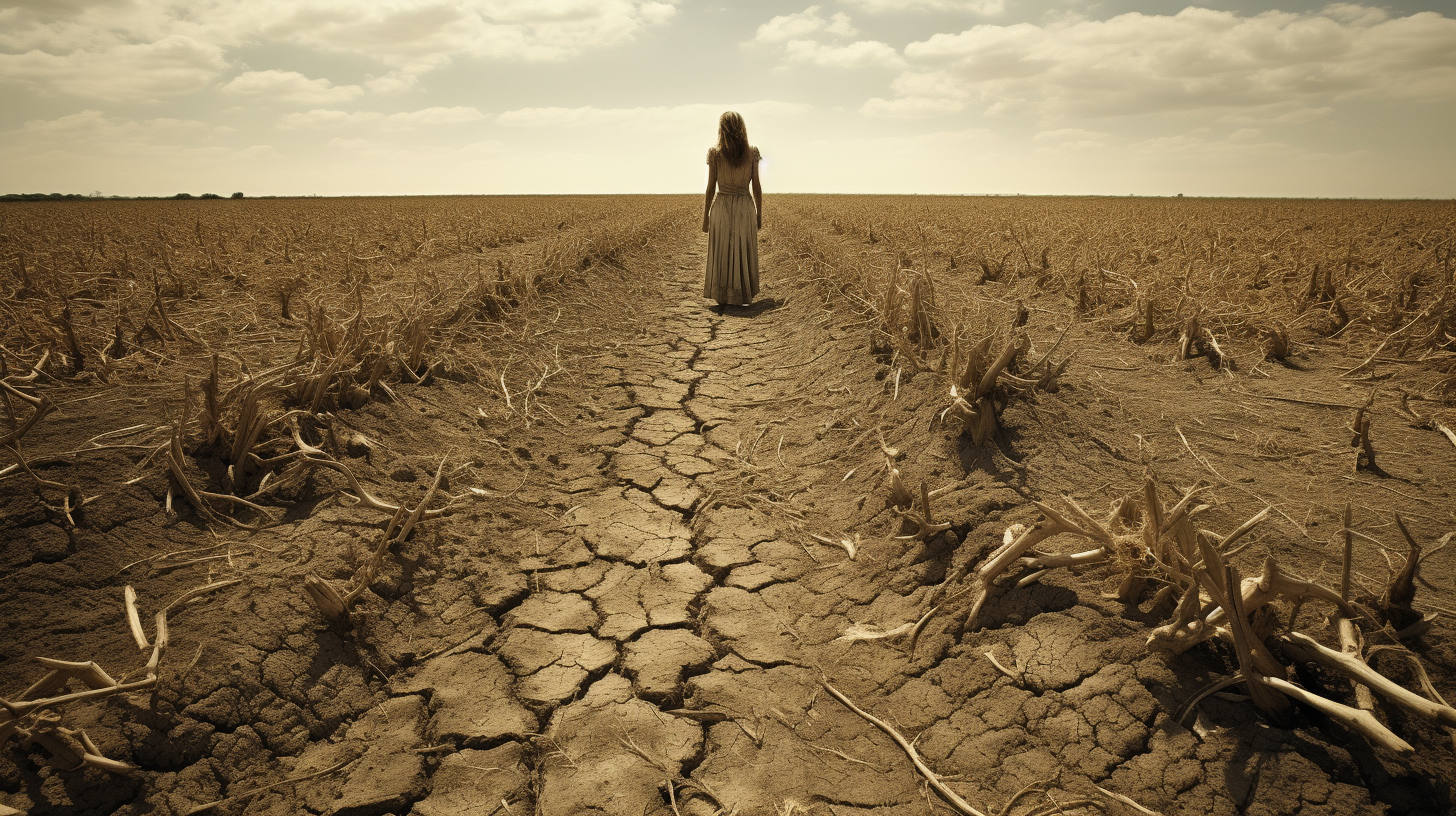Amid a landscape that once teemed with verdant abundance, now lie vast stretches of desolation. Fields that used to ripple with golden crops under the caress of the sun, have now succumbed to an arid silence. The ground, cracked and barren, holds within its fissures the memories of a forgotten fecundity. Welcome to the new era, where Mother Earth’s bountiful pantry lies empty; we are facing a future devoid of the sustenance we took for granted. Our narrative weaves through the lives touched by this reality, painting a portrait of the world where hunger pangs are as common as the dust which chokes the sky.
The phrase ‘amber waves of grain’ reads like a cruel joke to the inhabitants of regions where the Infinite Drought has erased such hopeful hues from the lexicon of the landscape. Interviews with farmers standing despondent on their parched parcels of former prosperity echo the same desperate refrain: ‘We can neither sell nor sow.’ Their hands, once tools of creation, now idle as sentinels of despair, while their granaries loom empty, haunted by the ghosts of harvests past.
The plight of these weathered souls is but a reflection of the global tapestry, woven with the threads of widespread famine. Markets, once buzzing with the trade of nature’s nourishment, stand hushed, as the whisper of scarcity meanders through the streets. Empty bellies and desolate aisles provide stark juxtaposition to the tales of the old world’s feasts and festivals. Forgotten is the taste of plenty, as humanity’s palate is forcefully simplified to the bitter tang of need.
Yet, amid this bleak panorama, the engine of innovation chugs along – albeit sputtering and coughing on the fumes of desperation. Agronomists and biotechnologists scramble, as modern-day alchemists, in a frantic search for solutions to coax life from the dying earth. From bioengineered seeds to ancient water-harvesting techniques, scientific endeavors aim to bridge the chasm between survival and extinction. But these are mere drops in a parched bucket, for the magnitude of the disaster far eclipses the reach of current innovation. Even the most optimistic minds whisper, in hushed tones, of a race against time we are ill-equipped to win.
Some voices, like that of the esteemed Dr. Aleksei Dryden whom we featured previously, provide a woven fabric of scientific insight into these cataclysmic changes. Their analyses offer the raw data and dire predictions that form the tapestry on which our present is painted. ‘The data is unequivocal,’ asserts one ecologist with dust-laden boots, ‘the new normal is a world unrecognizable from the one we inherited.’
And as the days march inexorably on, weather patterns grow more erratic, the relentless sun beats down with a ferocity that renders technological advances almost moot. The specter of hunger expands its dominion, embracing more of the global populace in its unwelcome grip. The wild, once a bounty of natural equilibrium, is now a tableau of migration and mortality, as species abandon their parched refuges in search of sustenance – or perish, leaving only bleached bones as testament to their passing.
So where does this leave us, the observers, the chroniclers of this descent into a less verdant epoch? We stitch together these narratives not to indulge in the masochism of despair, but to hold a mirror to the world we are creating – a world harmonized not in lushness and life, but in scarcity and suffering. To read these words is not to find solace, but to confront the uncomfortably raw essence of our circumstance. It is to question, deeply and incessantly, the choices that lead us here and the paths that remain unseen in the dust-laden winds of change. As fields turn to dust before our eyes, our chronicles remain, a testament to the world that could have been and the stark reality that is.
